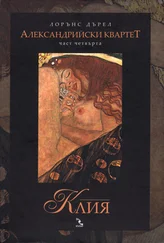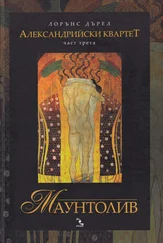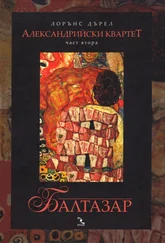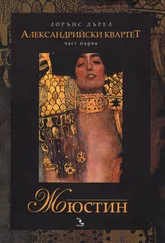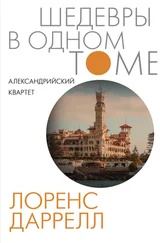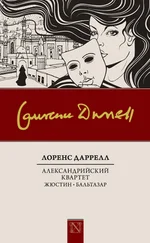Лоренс Даррелл - Prospero's Cell
Здесь есть возможность читать онлайн «Лоренс Даррелл - Prospero's Cell» весь текст электронной книги совершенно бесплатно (целиком полную версию без сокращений). В некоторых случаях можно слушать аудио, скачать через торрент в формате fb2 и присутствует краткое содержание. Жанр: Проза, на английском языке. Описание произведения, (предисловие) а так же отзывы посетителей доступны на портале библиотеки ЛибКат.
- Название:Prospero's Cell
- Автор:
- Жанр:
- Год:неизвестен
- ISBN:нет данных
- Рейтинг книги:4 / 5. Голосов: 2
-
Избранное:Добавить в избранное
- Отзывы:
-
Ваша оценка:
- 80
- 1
- 2
- 3
- 4
- 5
Prospero's Cell: краткое содержание, описание и аннотация
Предлагаем к чтению аннотацию, описание, краткое содержание или предисловие (зависит от того, что написал сам автор книги «Prospero's Cell»). Если вы не нашли необходимую информацию о книге — напишите в комментариях, мы постараемся отыскать её.
Prospero's Cell — читать онлайн бесплатно полную книгу (весь текст) целиком
Ниже представлен текст книги, разбитый по страницам. Система сохранения места последней прочитанной страницы, позволяет с удобством читать онлайн бесплатно книгу «Prospero's Cell», без необходимости каждый раз заново искать на чём Вы остановились. Поставьте закладку, и сможете в любой момент перейти на страницу, на которой закончили чтение.
Интервал:
Закладка:
In the chapel of the church of his name he lies, looking a trifle misanthropic but determined, as befits one who has seen most sides of life on earth, and who is on equal terms with heaven. The sarcophagus is deeply lined and comfortable; he lies in hibernating stillness in his richly wrought casket, whose outer shell of silver is permanently clouded by the breath of the faithful who stoop to kiss it. The darkness swims with chalices and banners — all the garishness of Byzantine church-decoration. A style of art which is literal rather than figurative: the saint has a real nimbus of silver let into the canvas round his haunted oval face. Eyes of black olive stare unrepenting down from every wall.
Here in the church of St. Spiridion, Venice and Turkey compete in silver and brass, in bronze and iron; and under this tortured inlay-work and colour the dark pagan eyes still stare with their fleshly hunger — reminding you how close the old pantheon is, locked in this narrow ritualism.
Light, dammed up by the obtuse walls, bursts fiercely through the great porches and explodes like butter over the scarves and head-dresses, the beards and lips and clothes of the peasants.
The saint lies quite composed in his casket. He is a mummy, a small dried-up anatomy, whose tiny feet (clad in embroidered slippers) protrude from a vent at the bottom of his sarcophagus. If you are one of the faithful you may stoop and kiss his slippers. He will answer your prayers.
Who is Spiridion? His life is an amusing study in myth. He was born and lived as a shepherd in the mountains of Cyprus. When his wife died he buried his unhappiness between the four walls of a monastery, becoming immediately remarkable for his fineness of spirit and fidelity to God. As a bishop he took part in the great council of Nicea, where he gave miraculous testimony of the then disputed doctrine of the Trinity by casting a brick (which he must have secreted about his person) to the ground, where it immediately gushed fire and water in one.
A long life, many good works, and not a few miracles contributed to his subsequent popularity, so that when he died, this humble Bishop of Trymithion (he was well over ninety years old) had become revered almost as a saint.
He was buried: but the restless virtue in him could not waste in the earth — and now exhalations of sweetness from his coffin began to trouble the orthodox. A spray of red roses broke from his tomb — to-day still to be seen in Cyprus. These combined omens persuaded the religious to dig his body up — and no sooner was this done than Spiridion justified his resurrection by a miracle, entering, so to speak, into his posthumous life and career from the refuge of God Himself.
He had hardly a chance to settle down for when Cyprus fell to the Saracens his relics were removed to Constantinople; and when Constantinople itself was threatened by the locust hordes of the Moslem world he was once more forced to change his country of operations.
At this time the Saint was in private ownership. A Greek, recorded as having been both priest and wealthy citizen, and whose name survives as Kalocheiritis, preserved him equally against the unbelieving Moslems and incipient decomposition. This Greek appears to have had some traffic in saints since at the same time he possessed the embalmed body of another saint — a lady of virtue — Saint Theodora Augusta.
Kalocheiritis packed his two saints (very much as a pedlar packs his apparatus) in two shapeless sacks. He slung them, one on each side of his mule, and telling the curious that they contained animal fodder, crossed one fine spring morning into the enchanted landscapes of Greece.
The long conversations held between Augusta and Spiridion as they jolted over the bare mountain tied in sacks, are not recorded by the hagiographers — and indeed have aroused the curiosity of none besides myself. I cannot believe however that such a long journey can have been passed without some exchange of theological pleasantries — though I do not claim the least gallantry or any such immodesty for Spiridion; but they could not have gone on together, day by day, roped like carrion in their stifling sacks, without feeling the necessity for speech. They must have smelt together the bruised rawness of the sage even above the clinical richness of the embalming fluids. The air must have sharpened as they reached the pine-belted slopes of the Epirus mountains; the incessant halts must have been intolerable to the dead man and woman, who had need of neither food nor sleep, but jolted on in darkness rich only in a knowledge of God.
Paramythia in Epirus gave them refuge until 1456 when they were brought across the blue waters of the gulf to Corcyra, and laid in the chapel of Michael the Archangel.
Here, it appears they decided to stay, the two saints. Perhaps the fecundity and beauty of the island appealed to them as much as the merry laziness of the natives. At all events here they have both withstood fire, siege and famine for several hundred years. When the Turks appeared with their menacing hordes it was the Saint who dispersed them disguised as a south-westerly squall; when epilepsy struck down the Armenian quarter it was Theodora who expelled it; and when the great plague of Naples selected Corcyra as a theatre of operations Spiridion is said to have sent it off to Naples with one contemptuous invocation, in the shape of a frightened black cat.
Owing to the rights of possession the Saint has passed through many hands. The three sons of Kalocheiritis, for example, inherited nothing beyond the two embalmed figures of their father. The two eldest were given a half share each in Spiridion, while the youngest was forced by law to accept Theodora entire. He was obviously not content with this arrangement since he very soon relinquished the lady to the community. Spiridion, however, was a source of revenue as well as awe. By 1489 his two half shares were united in the possession of Philip the grandson — who made an attempt to carry off the relic to Venice, obviously to increase his turnover. This suggestion threw the island into a ferment, and he was forced to allow the tears and entreaties of the Corcyreans to prevail. Spiridion stayed but it was not till 1598 that he got his own church.
With the next generation the Saint became a dowry — for Philip's daughter Asimeni had little beyond her beauty, and marriages were as much forms of financial arrangement then as they are to-day.
The Saint was, so to speak, married into the Boulgaris family, and in their possession he has remained until to-day, universally loved and respected throughout the Ionian.
To the little figure in its casket the faithful bring posies of flowers and trinkets — but chiefly candles to back up their prayers. In the shady market-place outside the church there is a stall brimming with candles of all sizes, and here those who wish may buy anything from the smallest dip to a huge Chandler's Masterpiece, as long and thick as a man's arm. These candles give a strange impression, reminding one of stumps of human limbs smouldering in the dimness before the altar.
I must not forget to add that among the decorative motifs of the church is a wealth of Douanier-like paintings of shipwrecks, left as testimonials by thankful sailors whom the Saint helped into harbour in bad weather; there are also several pairs of unsolicited but accepted crutches. But the Saint is chiefly the patron of sailors, though his dominion can be extended in cases of need. Little children find him often in their dreams, a grim little figure of a man (not unlike General Montgomery) who knows exactly how to deal with croup, diphtheria, or lice.
Four times a year is the Saint's casket borne on a triumphal procession round the town; while on Christmas Eve and at Easter he is placed on a throne in the church and accessible to all comers. But the processions are something more than empty form. From early morning the streets are crowded with the gay scarves and headchiefs of peasants from outlying districts who have come in to attend the service; every square is alive with hucksters' stalls selling nuts, ginger-beer, ribbons, sweetmeats, carpet-strips, buttons, lemonade, penholders, bootlaces, toothpicks, lucky charms, ikons, wood carvings, candles, soap and religious objects. You will see the piled coiffures of Gastouri under their raving head-cloths of rose, yellow and blue; you will see the staid blue and white of the northern womenfolk, so like magpies; kilted Albanians in embroidered boleros, and woollen cross-gartered stockings — their womenfolk jingling in bracelets of coins; you will see the verminous Abbots of Fano and points north, and you will see the woollenvested sailors of the opposite coast with their goathide belts and knives, and their moustache ends drawn back round their ears.
Читать дальшеИнтервал:
Закладка:
Похожие книги на «Prospero's Cell»
Представляем Вашему вниманию похожие книги на «Prospero's Cell» списком для выбора. Мы отобрали схожую по названию и смыслу литературу в надежде предоставить читателям больше вариантов отыскать новые, интересные, ещё непрочитанные произведения.
Обсуждение, отзывы о книге «Prospero's Cell» и просто собственные мнения читателей. Оставьте ваши комментарии, напишите, что Вы думаете о произведении, его смысле или главных героях. Укажите что конкретно понравилось, а что нет, и почему Вы так считаете.


